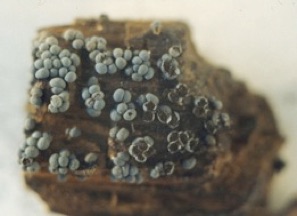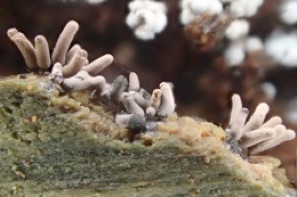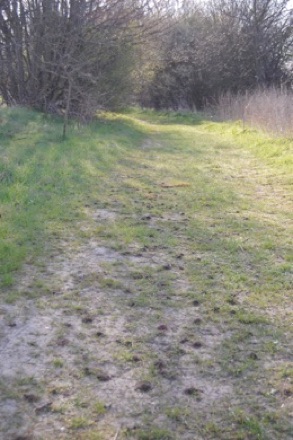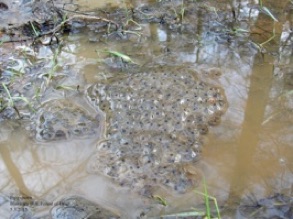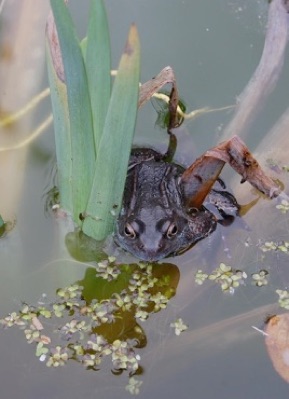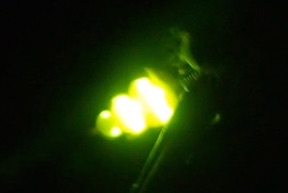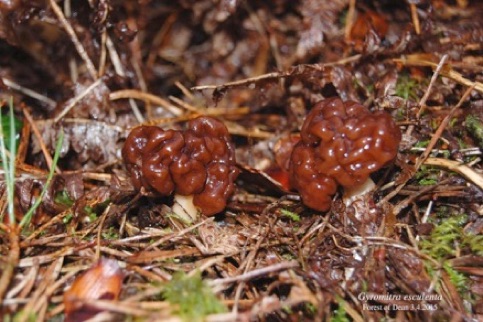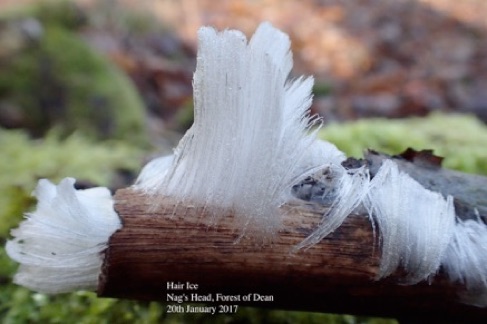Welcome to Myxomagic
A site devoted to Myxomycetes, Fungi, and other wildlife.
Welcome to Myxomagic
A site devoted to Myxomycetes, Fungi, and other wildlife.

September 2018
Signs of Spring
The evening croaking of the frogs as they mated in the garden pond was more of a gentle rumbling that you had to listen out for, than the raucous noise that TV cartoons would have us believe in. Within a few days of the appearance of the first male, it was all over, and the shallower areas were overbrimming with fresh clumps of jelly spawn; but the frogs have stayed in the pond and can be seen diving for cover as we approach. Magpies have also discovered the spawn, and we have been forced to cover the pond with netting or risk losing all the new generation of tadpoles.
Spring fungi - mostly ascomycetes - are also appearing, but many of them are small and shy, and take some finding, as did the Gyromitra esculenta pictured below. Only the scarlet Sarcoscypha austriaca stands out at a distance.
Hair Ice - January 2017
Hair ice (also known as ice wool or frost beard) is a type of ice that forms on dead wood and takes the shape of fine, silky hair. It is somewhat uncommon, and has been reported mostly at latitudes between 45 and 55°N in broadleaf forests. The meteorologist and discoverer of continental drift, Alfred Wegener, described hair ice on wet dead wood in 1918, assuming some specific fungi as the catalyst, a theory supported by the work of Gerhart Wagner and Christian Mätzler in 2005. In 2015, the fungus Exidiopsis effusa was identified as key to the formation of hair ice. (From Wikipedia).
On 20th January, 2017, several examples of hair ice ware found on deciduous logs at Nag’s Head RSPB Reserve in the Forest of Dean, during a period of frosty weather which lasted for several days. The following day, as the frosty weather continued, many more examples were found near to Soudley Ponds, again on deciduous logs of varying sizes.

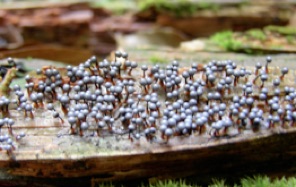
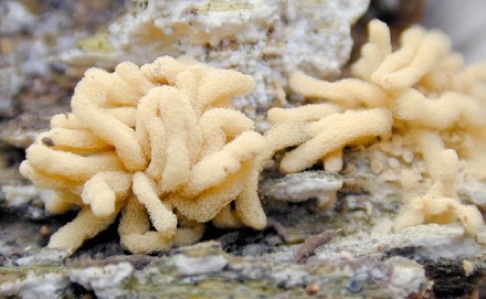
Welcome to Myxomagic.
I’d like to share some of the wildlife I discover as I explore the area around my home, in particular the magical Myxomycetes, or slime moulds, but also fungi and anything else of interest.
Crawling through the soil almost always unnoticed unless actively sought out, are strange organisms that do not fit into the neat and tidy classifications of plants, animals, or even fungi. Unlike plants, they do not contain chlorophyll, and so cannot make their own food, they have no cell walls to protect them, and they do not need light to grow. Unlike fungi, they do not produce a mycelium, and can not break down complex plant substances like cellulose and lignin. Like an amoeba, they can engulf food particles such as bacteria and other nutrients, but unlike animals, for most of the time they are neither unicellular nor multicellular, but plasmodia. They exist as larger or smaller blobs of protoplasm bounded by a cell membrane, but of indefinite size and containing many, many nuclei (plant and animal cells normally contain only one nucleus per cell, and fungi normally no more than two).
Plasmodia can be brightly coloured on occasion, and large enough to be visible to the unaided eye, when the reason for the term “slime” becomes apparent. Let not this be a deterrent, however, much less such colloquial names as “dog’s vomit”, which do little to encourage the casual observer to enter their world of endless beauty and - yes - magic, Myxomagic!
April 2015
Primroses are everywhere and wood anemones brighten the woods and roadsides. Ladies’ Smock, a plant of marshy ground in the East, is common on roadsides here, and is already brightening the hedgerows. Although called the “Cuckoo Flower”, I haven’t yet had the luck to hear a cuckoo this year. Blakeney is almost like an outlier of the Golden Triangle and true wild Daffodils abound along the streamside and in several pastures that have not yet suffered the abuse of intensive agriculture.
If you look carefully, you may be lucky enough to find the little ‘volcanos’ which betray the nests of mining bees, or even see a solitary bee building and provisioning its nest in a snail shell, which it hides under a wigwam of tiny sticks, and if you venture out after dark in midsummer, you may even see the unworldly lantern-light of the female glow-worm (which is not a worm at all but a wingless beetle).
Left, from top down:
Young Trichia sporangia
Young Cribraria sporangia
Badhamia foliicola
Arcyria cinerea
Nests of Mining Bees
Frogspawn, tadpoles and Frog.
Glow worm.
Hair Ice
Below, right: Osmia bicolor builds her nest.
I’d like to share my enthusiasm for Slime Moulds - the Myxomycetes, and also record a little of the wildlife I see around me.
